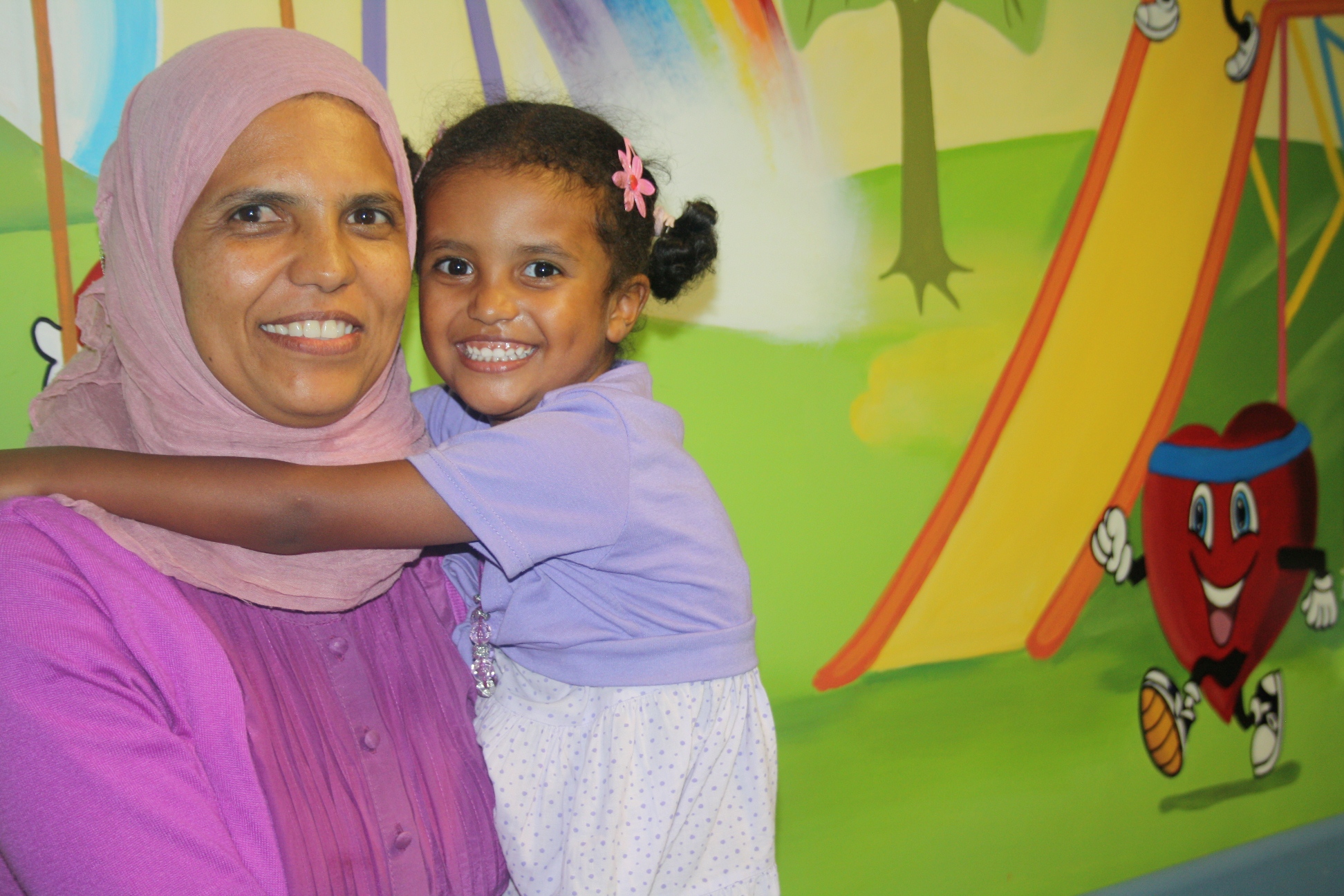
News
Living with Congenital Heart Disease
Thaakirah Matthews (4) was three months old in 2011 when her mother, Raadhiyah, took her to the Red Cross War Memorial Children’s Hospital for severe diarrhoea. What started as a medical condition soon turned into an experience that her parents will never forget.
The Matthews family soon learned that Thaakirah had a type of Congenital Heart Disease condition known as Transposition of the Great Arteries, Pulmonary Stenosis and Ventricular Septal Defect – jargon at the time but doctors made sure that the family completely understood Thaakirah’s situation.
The gist of the doctors’ diagnosis was that little Thaakirah’s heart presented extremely complex defects where her two main arteries were reversed, resulting in decreased oxygen in the blood pumped to the rest of her body. She also had a heart valve disorder and a hole in the wall that separates the right and left chambers of her heart. At the age of three months, surgeons inserted a cardiac shunt to oxygenate her blood due to the narrowing of her pulmonary vessel and she needed to have regular check-ups with cardiologists on an outpatient basis.
Thaakirah’s condition is known as Double Outlet Right Ventricle (DORV), statistically classed as 1 in 500 000 which falls into 1 to 3% of the global congenital heart defects.
In 2013, Thaakirah’s parents were offered the opportunity for a visiting cardiothoracic surgeon from France to perform the corrective surgery but Thaakirah’s required procedures were all too complicated and the surgery was postponed. While her little body was fighting all the odds against her fragile heart, Thaakirah showed signs of facial paralysis and was admitted to the cardiac ward at the Red Cross War Memorial Children’s Hospital. A day later, she lost movement on one side of her body, and after an MRI scan, neurologists detected two abscesses growing on her brain – one on the surface of her brain and the other right in the centre of her brainstem. This unfortunate situation resulted from infected blood clots which moved from one heart chamber to the other and up to her brain, according to her cardiologist.
Neurosurgeons executed an emergency operation on the abscess on the surface of her brain but the second abscess was located in a very difficult position, deep inside the brain and in a space of less than 2 cm. The abscess was growing fast.
Neurosurgeons performed a stereotactic neuronavigation-guided aspiration of the abscess using the Cape Town Stereotactic Pointer, designed by a team of Cape Town professionals. This operation had not been done for years at the hospital and the risk was paralysis or not waking up after the surgery. The procedure was successful and Thaakirah had an excellent recovery after a period of critical care in the Hospital’s Paediatric Intensive Care Unit (PICU). However, this journey of hospital admissions was not over for Thaakirah as her heart defects were still detrimental.
Thaakirah had a Nikaidoh-bex procedure performed by resident cardiothoracic surgeon, Dr André Brooks – a first time surgical procedure of its kind on a child’s heart at the Red Cross Children’s Hospital. Her main arteries were reversed to the position it should be and the pulmonary vessel was brought out anteriorly (to the front of her heart) and connected to the right heart ventricle due to the complex narrowing of this vessel – another milestone achievement for this extraordinary children’s hospital.
During her recuperation in the PICU, the family stayed at Thaakirah’s bedside while she regained her strength under the vigilant care of critical care specialists and a multidisciplinary team of medical professionals who monitored every aspect of her recovery. She now visits the hospital as an outpatient and is a far cry from the ill-looking toddler she was before she had undergone the operations.
Additional information about Congenital Heart Disease (CHD):
- CHD Awareness Week is observed annually between 7 and 14 February
- There are over 40 different types of CHD conditions
- Over 95% of children who have surgery will survive into adulthood
- CHD often went undiagnosed, but if detected early, is treatable
- CHD can be detected by the 20th week in pregnancy
- CHD is the number one birth defect in the world and is also the number one cause of birth defect related deaths
- Nearly one in every 100 babies is born with CHD
- In most cases the cause of CHD is unknown
Some babies with heart defects might have one or more of these signs. Talk to your doctor if you notice any of these in your baby:
- (H) HEART RATE: Too fast or too slow? Normal is between 100 and 160 beats per minute
- (E) ENERGY: Excessively sleepy? Falling asleep during feeding?
- (A) APPEARANCE: Pale, dusky and blue skin tone?
- (R) RESPIRATION: Breathing too fast or too slowly? Normal is between 40 and 60 breaths per minute
- (T) TEMPERATURE: Cold to the touch, especially the hands or feet?
Angelique Jordaan
Communications Officer: Red Cross War Memorial Children’s Hospital
Tel: 021 658 5448
E-mail: angelique.jordaan@westerncape.gov.za


